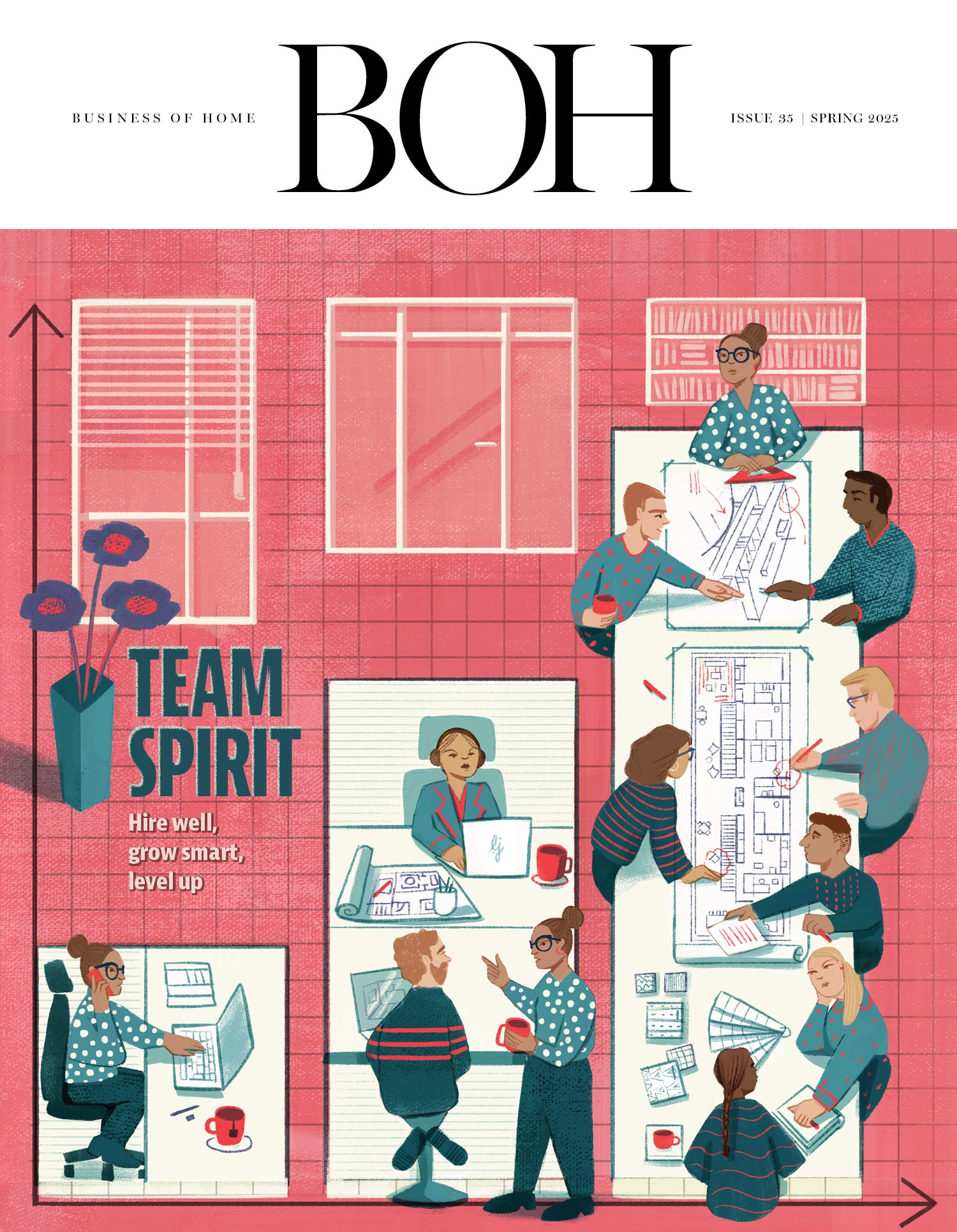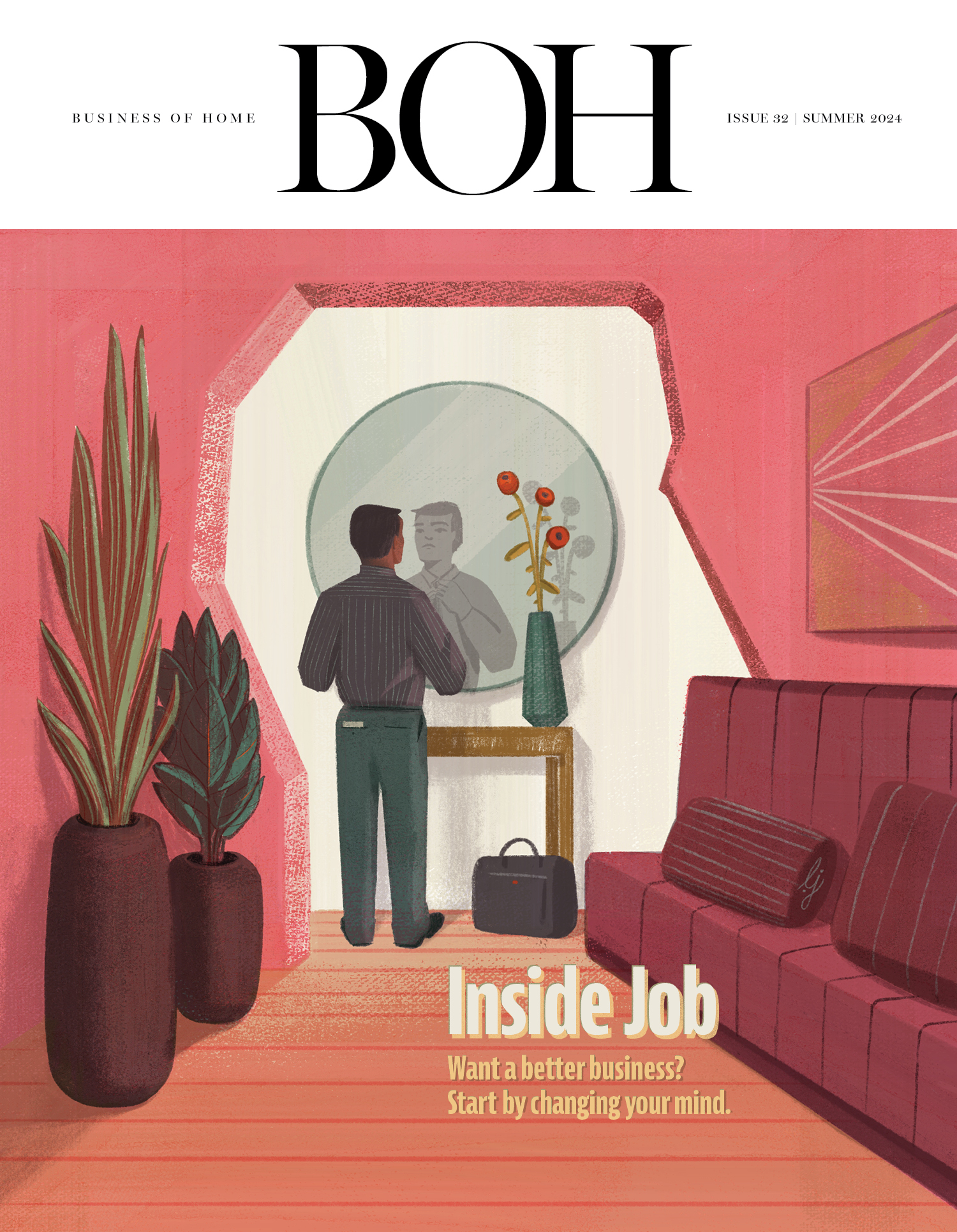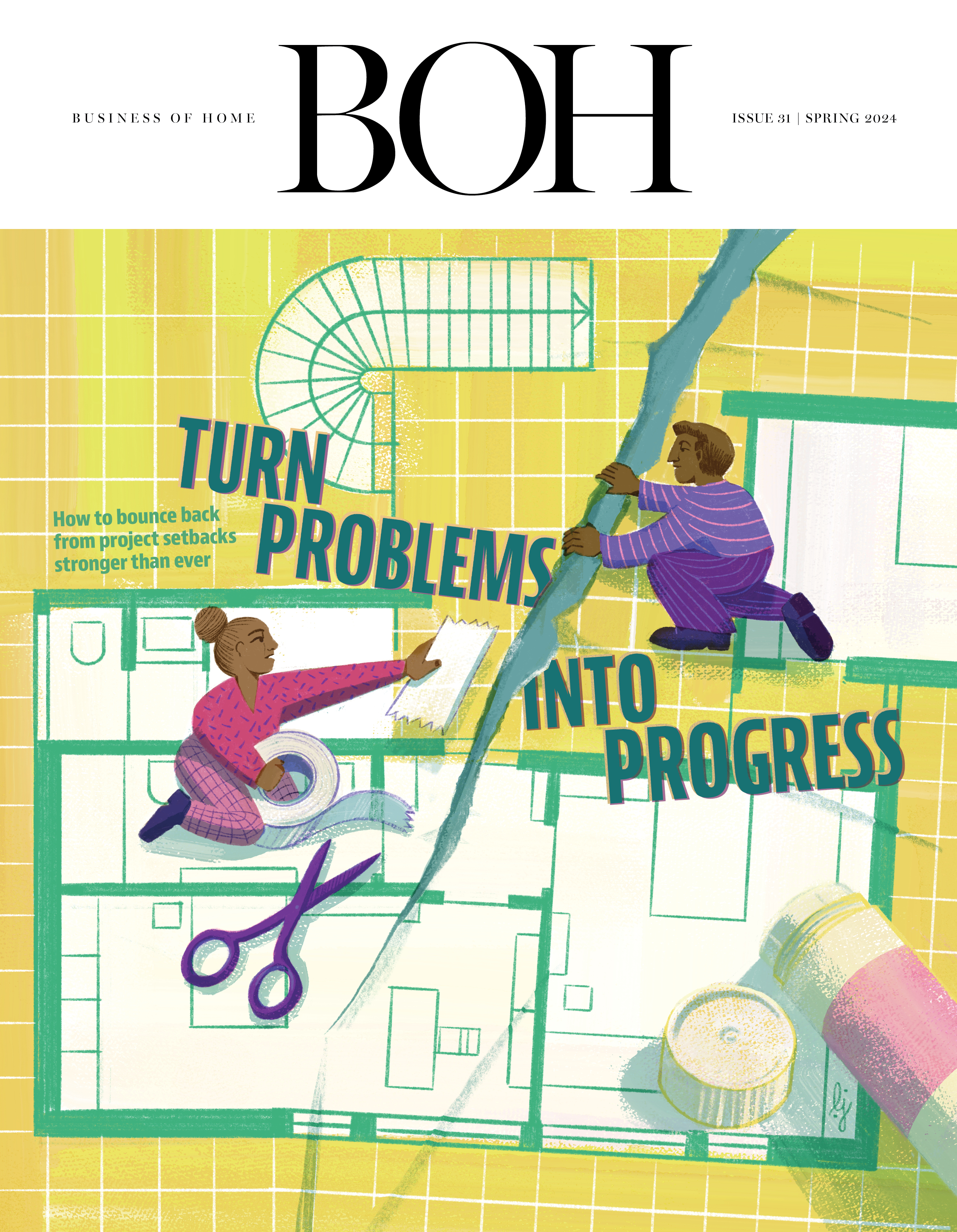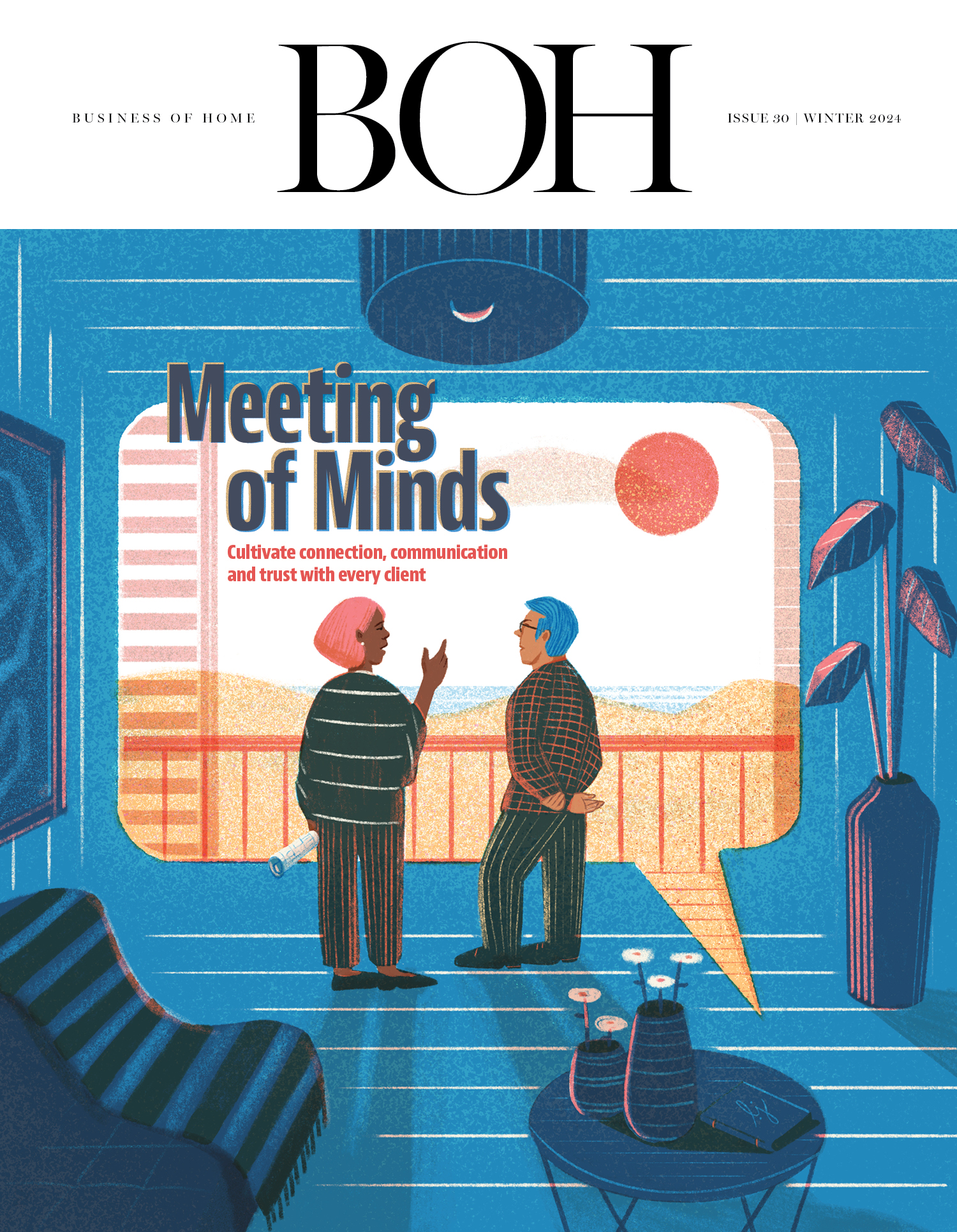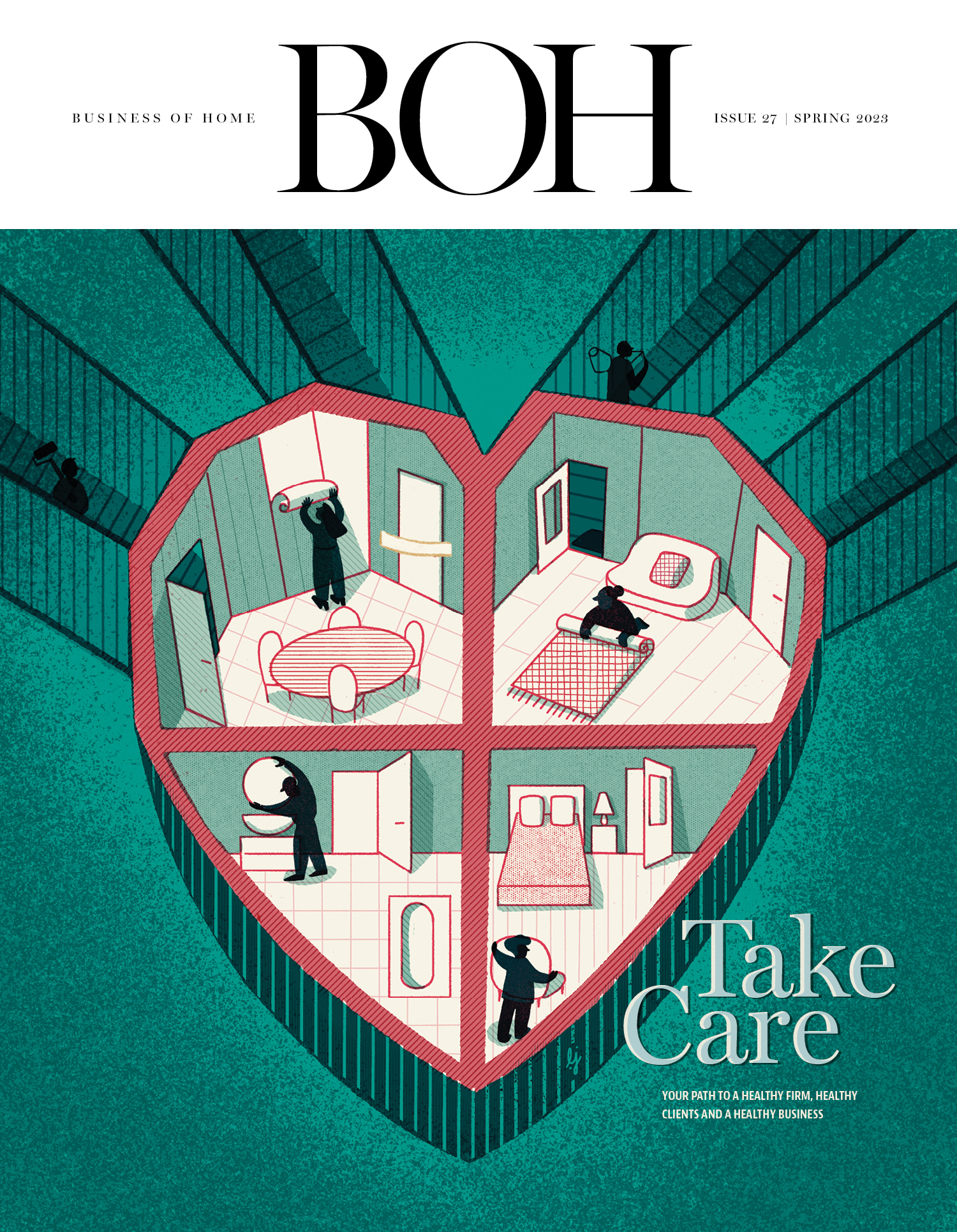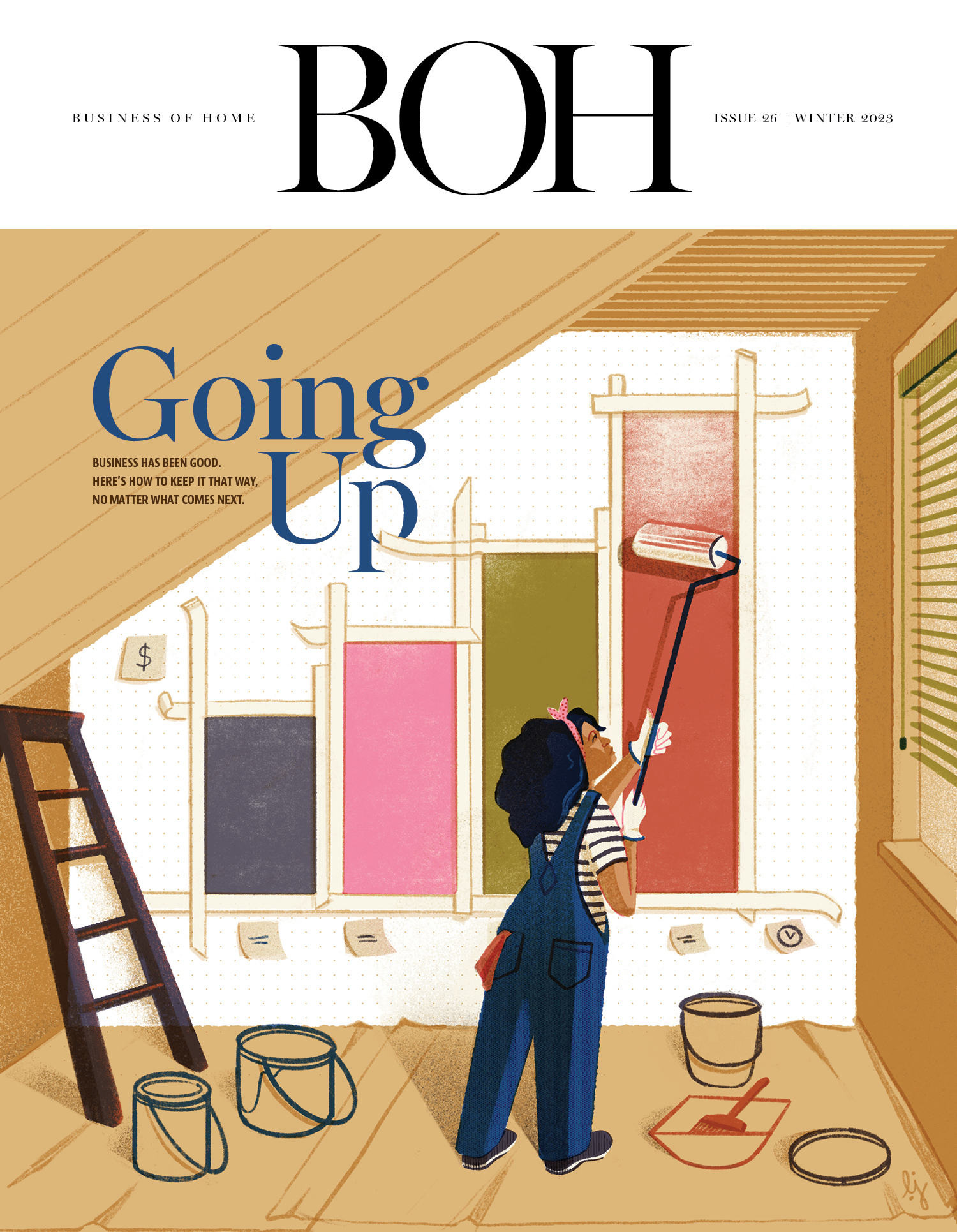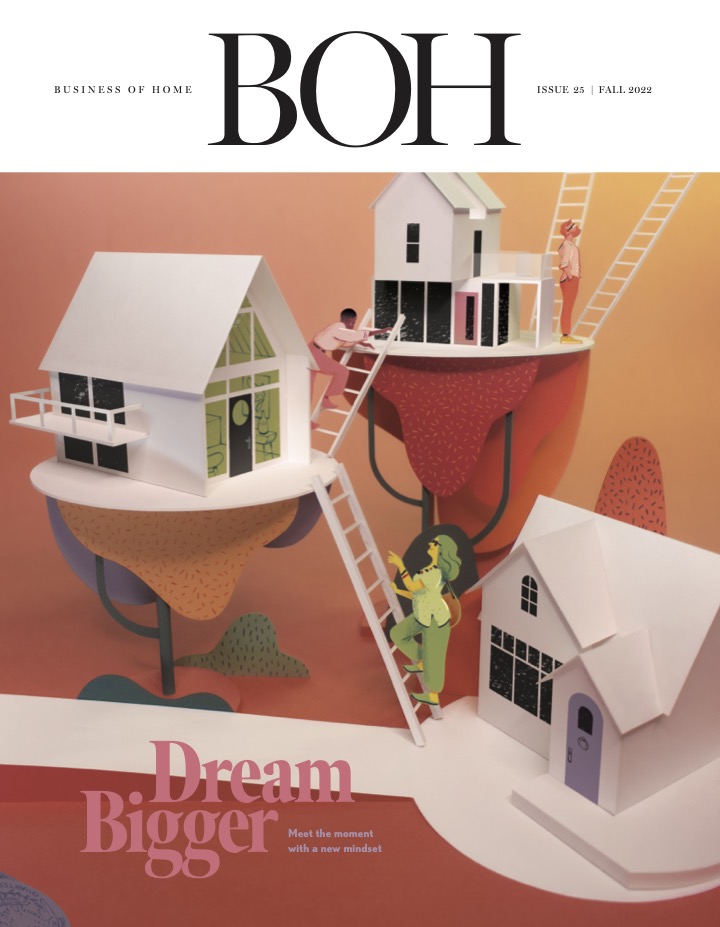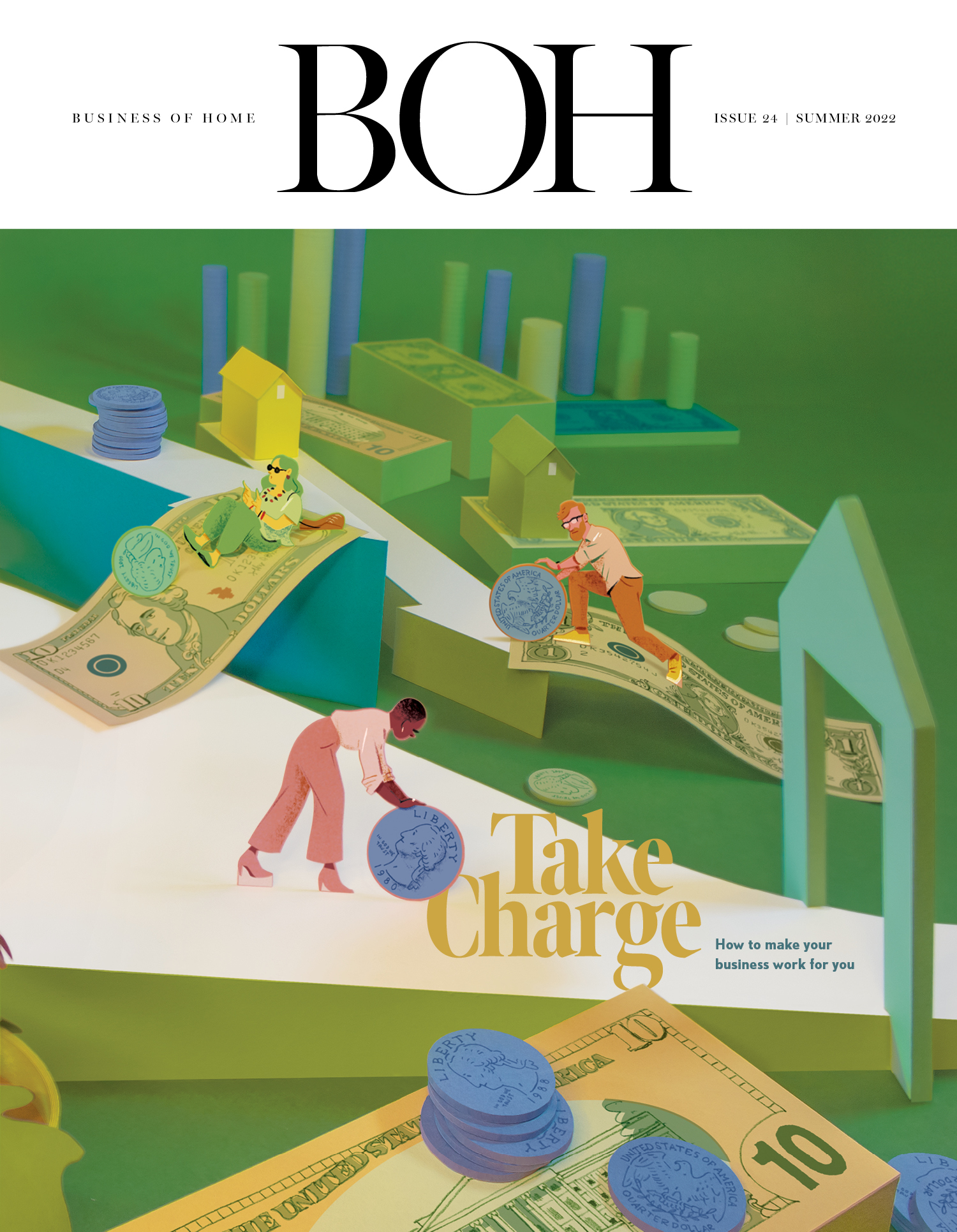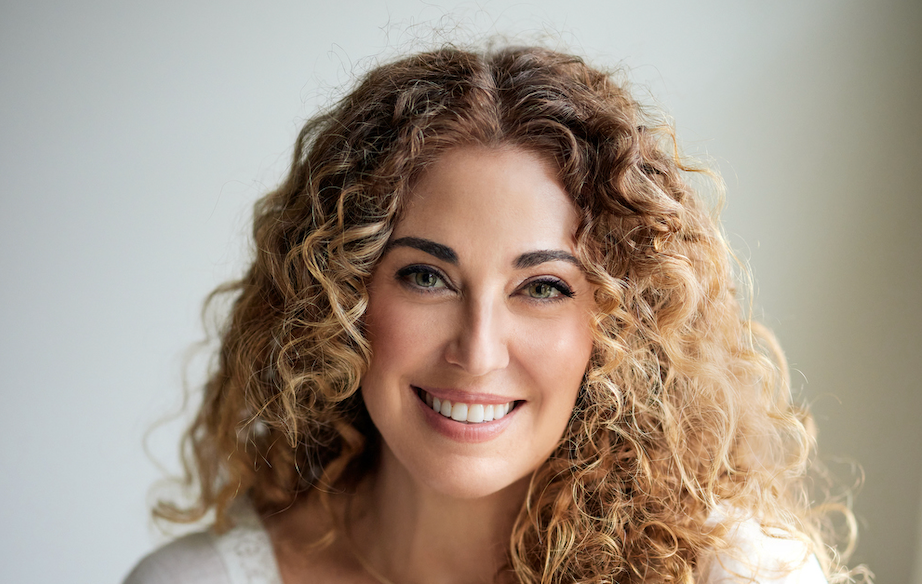Bella Mancini moved to New York with a clothing and textiles degree and dreams of working in fashion publishing. But after an experience with a terrible boss at a marketing agency—a position meant to free her from a seemingly endless string of temp jobs—she had finally hit her limit. She quit on the spot, walked out of the office, and called a friend in search of a shoulder to cry on.
“We met at the White Horse Tavern and I was sobbing into my glass, like, ‘What am I going to do with my life?’” Mancini tells host Kaitlin Petersen on the latest episode of Trade Tales. “I thought about my dad, who was an entrepreneur, and he said, ‘You should make your favorite hobby a career.’ I was like, ‘How do I get into interior design?’”
Luckily, she had picked the right person to commiserate with. Her friend was working at Waterworks—and one of her designer clients, Ellen Hamilton, happened to be looking for an assistant. A few phone calls and meetings later, Mancini had her first design job, where she discovered a career she could finally pour herself into.
In the years to follow, she continued to hone her design skills, while also sharpening her business acumen. Before long, Mancini and another friend, an event planner, decided to combine forces on a side hustle creating elaborate and immersive dinner parties for the city’s sudden proliferation of young dot-com millionaires. The pair’s first design client and a write-up in New York by Wendy Goodman soon followed, and inquiries began coming in fast enough that Mancini could leave her full-time gig. In 2000, the pair’s design business was born. By 2005, Mancini’s business partner had moved abroad, making her the firm’s sole principal and kicking off nearly two decades of success.
Then, the pandemic hit. For some in the design industry, it was a major boon for business—but for Mancini, it landed differently. Overnight, her project pipeline dried up, and her firm’s New York–based projects ground to a halt. With low cash reserves, she was forced to lay off almost her entire team, and even took a step back from the business herself. But the firm’s story wasn’t over yet: Before long, the designer sprung back into action, hiring a business coach and overhauling her firm’s processes and pricing structure to build back a business that could withstand whatever came ahead.
On June 11, design business strategist and coach Melissa Galt will teach you how to reclaim your time and turn productivity into profitability with smarter project management, strategic scheduling and elevated client experiences. Click here to learn more and remember, workshops are free for BOH Insiders.
Elsewhere in the episode, Mancini explains why it’s important for clients to communicate with every member of her team and how ditching a markup has transformed her business for the better.
Crucial insight: When her business reached its moment of crisis, the designer turned to business coach (and BOH columnist) Sean Low for help in charting a new path forward. “He helped me completely rework the way we build, the way I thought about my business [and how I framed] my value,” she says. ”But the most magical thing that he did, which took a massive leap of faith for me, was the full overhaul of our billing practices.” Once the firm started moving away from an hourly-plus-markup pricing structure and toward a flat fee, Mancini was finally free to think about design on her own time, while her business benefited from a newfound stability.
Key quote: “We work really hard to make people feel so comfortable and heard—[to communicate] that we are a partner in their project, not just the director of it. It’s kind of become our calling card.”
This episode was sponsored by Dallas Market Center and Crate & Barrel. If you like what you hear, subscribe on Apple Podcasts or Spotify.



